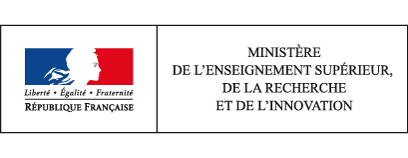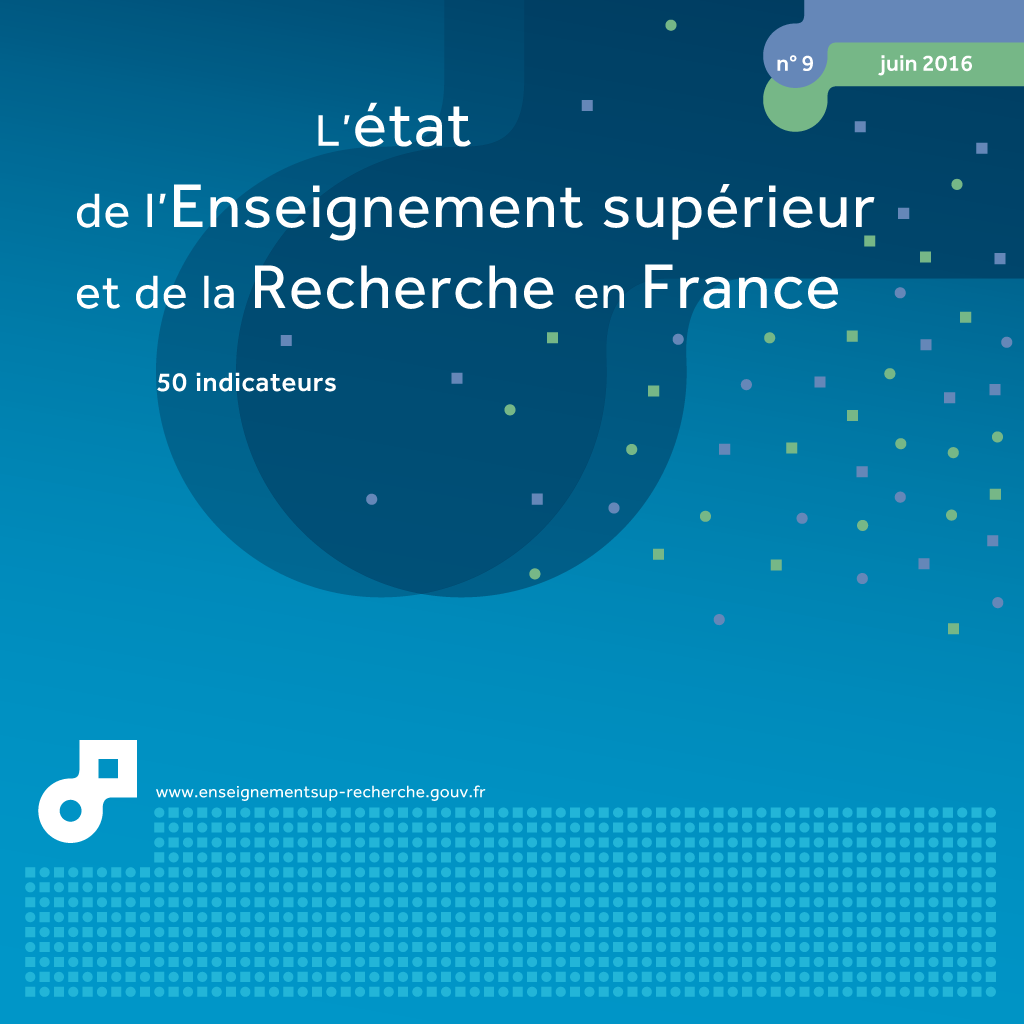33 funding of research and technology by local authorities
This page has been updated. Read 32. funding of research and technology by local authorities in Higher education & research in France, facts and figures 10th edition - June 2017
In 2014, local authorities devoted €1.3 billion to funding research and technology (R&T). This funding went in large part towards property transactions and technology transfer and innovation. Regional councils accounted for two-thirds of R&T funding, while municipalities were the second local contributor.
In 2014, the R&T budget for local authorities accounted for 8% (€1.26 billion) of all State funding for R&D (table 33.01). Regional councils were the main source of local funding, accounting for two-thirds of the local R&T budget. The proportion of departmental funding was 15% and the proportion of funding contributed by municipal councils and public establishments for cooperation between local authorities (EPCI) was 19%. The vast majority of municipal councils transferred their powers in this area to intermunicipal organisations: 17% of local funding for R&T came from EPCIs. In 2015, twelve metropolitan areas in France (Brest, Bordeaux, Grenoble, Lille, Lyon, Montpellier, Nantes, Nice, Rennes, Rouen, Strasbourg and Toulouse) contributed half of the forecast R&T expenditure from EPCIs. The French Overseas departments and territories contributed 2.6% to local R&T funding.
R&T funding was spent first and foremost on property transactions, which accounted for 36% on average per year of the R&T budget in the 2012-2014 period. Property transactions even accounted for over half of the R&T deals that fell under the state-region project contracts (CPER) (62% in 2012, 50% in 2014, the transition year to the new CPER). Over these three years, technology transfer (research in partnership, research commercialisation systems and other innovation aids) absorbed on average 29% of the annual R&T budget. 31% of R&T funding went towards public research (excluding property transactions), i.e. €377 million, with 13% used to support R&D projects, 8% spent on laboratory equipment and 10% on supporting researchers. Finally, 5% of funding was used to share and promote scientific culture and broadband networks designed to support research (chart 33.02).
The transition to the new state-region project contracts was gradual: although CPER funding for local R&T activities was €274m in 2014, only 4% at this stage was used to produce the new 2014-2020 CPER, with 95% relating to the 2007-2013 CPER and 1% to the 2000-2006 CPER.
In metropolitan France, during 2008 and 2009, the Regional councils provided specific support for R&T in terms of their overall budget (chart 33.03). From 2010 to 2014, their annual amount of expenditure on R&T was relatively stable, close to €800 million.
Regional funding for R&T can also be assessed by studying the amount spent on research as a proportion of the regional economy. R&T expenditure as a proportion of the total expenditure of a particular regional council is compared with regional business enterprise (BERD) and government (GOVERD) expenditure on R&D as a proportion of that region’s GDP. Each region is therefore compared against the national situation (chart 33.04).
In 2013, the GERD of metropolitan France accounted for 2.3% of its GDP, while funding for R&T contributed by all regional councils within metropolitan France accounted for 2.8% of their total actual expenditure. Nine of the thirteen regions contributed more than the average for metropolitan France for one or the other indicator. Only the Provence-Alpes-Côte d’Azur region contributed double the metropolitan average. The aggregated responses for 2013 from regional councils, according to the new regional scope, showed a smaller disparity between regional efforts than previously, both in terms of funding for R&T and the performance of R&D.
How to cite this paper :
close
Key figures
Whole of France
Whole of France
Whole of France
Whole of France
Whole of France
Whole of France
Whole of France
Whole of France
Whole of France
Whole of France
Metropolitan France
33.01 R&T budget for local authorities from 2012 to 2014 (actual expenditure, €M)
1 Semi-finalised data.
You can embed this table to your website or your blog by copying the HTML code and pasting it into the source code of your website / blog:
close
33.02 Breakdown of funding allocated to each objective in the R&T budget of local authorities (average from 2012 to 2014, in %)
You can embed this chart to your website or your blog by copying the HTML code and pasting it into the source code of your website / blog:
close
33.03 Regional councils in metropolitan France - R&T budget and changes in the R&T budget and total expenditure from 2007 to 2014 (€M, %)
2010 is used as the base year for national GDP (Insee).
1 The total actual expenditure of regional councils is taken from their administrative accounts, held by the Directorate-General for Local Authorities (DGCL).
You can embed this chart to your website or your blog by copying the HTML code and pasting it into the source code of your website / blog:
close
33.04 Regional funding for performing and financing R&D in 2013
2005 is the base year for regional GDP.
You can embed this chart to your website or your blog by copying the HTML code and pasting it into the source code of your website / blog:
close
Related statistical publications
 Note d'information SIES 16.07 - Le financement territorial de la R&T au cours de l'acte II de la décentralisation (2004-2014) - Claudette-Vincent Nisslé, Laurent Perrain - September 2016
Note d'information SIES 16.07 - Le financement territorial de la R&T au cours de l'acte II de la décentralisation (2004-2014) - Claudette-Vincent Nisslé, Laurent Perrain - September 2016 Le partage des compétences entre niveaux territoriaux, inscrit dans les lois relatives à la décentralisation – acte II -, explique la prédominance des régions : deux tiers du budget R&T annuel. Le niveau communal, par l’intermédiaire des intercommunalités qui se structurent, voit sa part augmenter progressivement. Dans une stratégie d’attractivité et de développement économique du territoire, les opérations immobilières et de transfert et aides à l’innovation des entreprises englobent 60 % du budget R&T.
L’effort des collectivités en faveur de la R&T, 19 € par habitant à partir de 2009, est réparti sur la France entière. L’organisation entre les niveaux territoriaux reste cependant propre à chaque région.

 Recherche et Transfert de technologie, Enseignement supérieur et Vie étudiante - Le financement par les collectivités territorialesFunding of research and technology transfer by territorial authorities - Survey carried out in 2015 - Claudette-Vincent Nisslé, Laurent Perrain - March 2016
Recherche et Transfert de technologie, Enseignement supérieur et Vie étudiante - Le financement par les collectivités territorialesFunding of research and technology transfer by territorial authorities - Survey carried out in 2015 - Claudette-Vincent Nisslé, Laurent Perrain - March 2016 The amount budgeted by local authorities for R&T is guided by the national and European territorial planning policy through the State-region project contracts (CPER). It is also guided by the Competitiveness Clusters policy, and more recently by the Investing for the Future Programmes (Programmes Investissements d’Avenir - PIA). Similarly, in the context of the ERDF regional operational programmes, the European policy of support for innovation and economic cohesion has firstly led to the production of Regional Innovation Strategies (SRI) and, since 2014, Intelligent Specialisation Strategies (3S), which promote intelligent, sustainable, inclusive growth.

 Note flash SIES 02 - Local authority funding of R&T: €1.3 billion in 2014 - Claudette-Vincent Nisslé, Laurent Perrain - February 2016
Note flash SIES 02 - Local authority funding of R&T: €1.3 billion in 2014 - Claudette-Vincent Nisslé, Laurent Perrain - February 2016 
 Note d'information SIES 15.07 - R&D expenditure in the French regions in 2012 - Anna Testas - September 2015
Note d'information SIES 15.07 - R&D expenditure in the French regions in 2012 - Anna Testas - September 2015 Businesses accounted for two-thirds of R&D expenditure, but this proportion varied between regions. The private sector share in R&D expenditure was particularly high in Franche-Comté, Haute-Normandie and Picardy. In the Midi-Pyrénées, Franche-Comté and Auvergne, business research activities were specialised in certain sectors, and over two-thirds was performed by large enterprises. Higher education institutions, in particular universities, ensured public research presence in every region. However, the regional breakdown of government expenditure on R&D depends on the location of the major research organisations.
Translation
 Etat de l'enseignement supérieur et de la rechercheL'état de l'Enseignement supérieur et de la Recherche en France n°9 - Juin 2016
Etat de l'enseignement supérieur et de la rechercheL'état de l'Enseignement supérieur et de la Recherche en France n°9 - Juin 201633 - le financement de la R&T par les Collectivités Territoriales - Laurent Perrain






